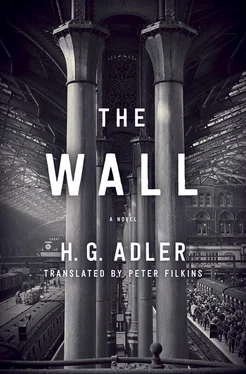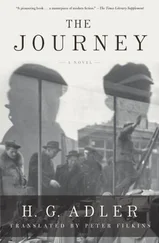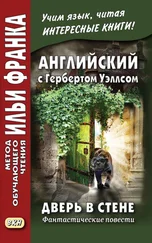Once the garments were finished, and shoes and buttons were prepared, the mannequins were wonderfully fitted out, mothers and daughters decorated with jewelry made of artificial gold and silver and appointed with artificial gems, necklaces and brooches, bracelets and rings, and everything that a rich family should have while celebrating the High Holy Days, while the men wore silk shawls and yarmulkes made of velvet. An initial display of the family in the workshop charmed the conquerors, as they felt no shyness in touching the faces and gently fiddled with the garments. An apartment was then set up in the hermitage, where the mannequins were given a dignified setting. On the street side, the hermitage had three spacious alcoves with windows beneath the women’s balcony, which had already been divided into display chambers, one a kitchen and the other a room decorated for the High Holidays. These served to provide all the needs of home for the family of mannequins, the conquerors giving the command, there being no need to speak with the housing office. The move from the workshop was followed in haste. So that the High Holy Room display was not damaged, the mannequins’ clothing was removed. The finely made things were sprinkled with white moth powder and placed in suitcases as the mannequins were laid in chests full of soft cotton and carried to the hermitage. Everything was placed in a corner, with cloth sheets draping over it, the mannequins initially assured of their rest.
What was necessary for the kitchen of a religious household was brought in, everything precise and exact according to ancient law. The living room was painted with soft pastel colors. Precious old shrines, chests, and commodes displayed the wealth of the mannequins; a Persian rug was rolled out, a sofa with a sweeping, stately back and silk covering invited one to sit, the wide circular table encircled by five comfortable chairs. A sideboard next to the window was covered with heavy old folios. A forged bronze lamp hung discreetly above the table, and four silver candleholders were attached to the walls, where some pictures were also hung in order to display the forefathers of the mannequins in quiet gravity, followed by a religious saying embroidered in silk and framed, and a delicately cut mirror. Homey doilies were spread out on top of the chests, as well as precious and useful items carefully set out, such as bowls, pitchers, cups, vases, plates made of tin or hammered silver, dull stoneware and bright-flowered porcelain, a sewing box made of rosewood, a heavy box decorated with ivory letters, another mirror that could move in a frame and be attached to a wash table, a soft pillow with gold-brocaded fringes and borders laid out on the sofa. The only thing that was denied this devout collection was a clock, for it was meant to continue forever; therefore, it needed no time and no means to indicate the time.
Otherwise, the mannequins lacked nothing. There was no reason to think that their live spitting images were expelled from the commemorative table of the Passover celebration and led to their death and extinction. Protected and enclosed, the mannequins had only to just be. In order that they not worry when there was no one living to spend time with them, nor any visitor to share their celebration, they were mercifully provided with lush plants in cobalt-blue majolica pots on forget-me-not blue bases. They were placed before the window in the middle, where the softly gathered curtains let the daylight stream through the delicately cut panes. Then the table was set for the model family, the cloth a brilliant white, two tasteful candleholders with ivory-colored candles (these having been burned a bit, so that the wicks were black), a splendid jug with its sides bulging and a crown cover for the holiday wine that had yet to be poured out. As good as it all looked, neither could the mannequins, who were given five cups, be relied on to pour out four servings of drink, nor did anyone believe the prophet would appear, whose goblet was also placed on the table. However, they did make sure that the mannequins had a meal that was set out on a tray, three flat loaves of unleavened bread made of white cardboard, with brown flecks that looked amazingly real, the other food made up just as artfully, be it the boiled eggs, the lamb shanks, the bitter and green herbs, or the two little bowls next to them, in which to dip one’s fingers like someone arriving out of the desert thirsty for water.
Once the room and the table were fitted out after continual fussing here and there, the mannequins were carried in carefully, in order to make sure not to harm them, which the curators managed not to do, the move going as planned. As fast as caution would allow, they were dressed and attended to. The grandfather was set up first and a pair of glasses put upon his nose, since they worried that his eyes looked tired. He didn’t say anything, but it was remarked how the glasses made him look all the more dignified. Next, the parents and the children were just as carefully placed on their chairs. Before the conquerors arrived to inspect the completed work, five precious little books were brought in that contained the story of the exodus, just as would be read aloud during the evenings of the Passover celebration. They were different editions, but each was opened to the page that read, “Thereby we are gathered to give thanks, to laud, to praise, to extol, to exalt, to glorify, to bless, to give respect and to worship to He who gave us our ancestors and all of these wonders.”
Jagged medals glistened on the doublets of the conquerors who showed up to greet the dead group encircling the table, three sagging men with bent knees. Reserved faces examined things closely, yet excitedly, but the conquerors could not hide their delight for long, for they were so moved, praising the installation as informative and useful. One of them, who was moved to speak first, carefully touched the grandfather’s velvet yarmulke as he began to speak.
“Unbelievably lifelike! We will live and die, but our children will live. Then they will come and look and know. With gratitude the future will recognize our achievement. They were something! But we need more of them. You are gifted and clever. Get together and create a big group of elderly standing before the ark!”
The speaker for the extinct was shocked. He was not a religious man, but he trembled before this assignment and also didn’t know what the purpose of the mannequins really was. He wanted to raise a concern and opened his mouth to do so. But the men were not at all willing to allow any objections. Then his courage died before such sharp threats, there being nothing else to do but fulfill the new order down to its last particulars. What was asked for was the face of a wise old man, or, at least, what the extinct folk thought looked like a wise old man wrapped in a long prayer shawl with his face turned toward the ark, his long arms raised up high, in his hands two wooden spools with the holy scroll upon them. The extinct listened with softly bowed heads and nodded in understanding. They were ready for anything. No matter what. And their fear of the conquerors was greater than their fear of the Lord. Thus this sacrilege was completed, going off without a hitch. A huge group of the elderly were created, their hands embracing the handles of the scroll and unable to lower the sacred text, which would be praised on high for all eternity.
The conquerors filed in again, their jackboots marching quickly and heavily across the floor before they saw what overwhelming strength had been granted the mannequins, for their arms would never lower again. They stared on, for no living person had ever held the sacred scroll high without faltering. Then the men erupted in resounding applause. They slithered up to the mannequins that rose up high above them. The conquerors, however, disapproved of the open installation, for it needed to be closed off, so before the shrine a sumptuous curtain was hung, an ancient cloth augustly embroidered with strong threads of gold and many other colors, depicting two powerful columns standing to the left and to the right, covered with grape leaves and grapes, while between the columns the areas were filled in with flowers, and above in the middle a large shining eight-sided rosette, above which was an ornate inscription in an intricate framework, to the side of which two lambent lions stood on their hind legs, double-tailed, on their heads a small lit crown, the lions holding in their paws a powerful crown glittering with jewels. This, the conquerors decided, was what was fitting.
Читать дальше












